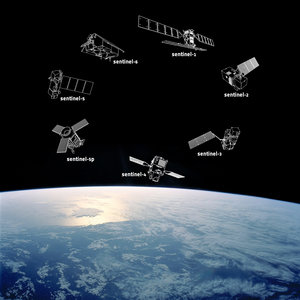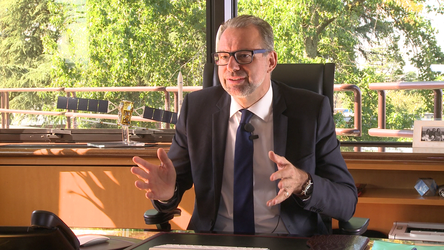Working towards AI and Earth observation
Satellites observing and measuring our planet deliver a huge amount of data that not only helps understand how our world is changing, but also benefits society by feeding into a myriad of everyday applications. Taking this to the next level, ESA is exploring how even more could be gained from these valuable data by using artificial intelligence (AI).
While satellite data leads to new scientific discoveries, AI can create pathways to new Earth observation. Satellites provide us with vast quantities of data, over 150 terabytes per day, which is not always processed efficiently.
In light of the growing importance of AI, a selected group of scientists and AI experts met recently at ESA’s centre of Earth observation in Italy to share strategies and goals of its benefits.
“In the next 10 years with so many new satellites under development, we will need to tackle the issue of extracting information from their observations and making use of it in terms of an ever-growing variety of applications and services,” said Pierluigi Silvestrin, Head of ESA’s Earth Observation Φ, or Future Systems Department.
“This is where AI is fundamental and offers a crucial opportunity not to be missed to solve these problems.”
The workshop was held in collaboration with the Confederation of Laboratories for Artificial Intelligence in Europe (CLAIRE), which comprises of 250 laboratories and research groups, as well as 2700 individual supporters. Its main goal is to strengthen AI research and innovation in Europe.
There are tremendous opportunities that can come from AI research, which is said to have become the driver of innovation, future growth and competitiveness for societies and industries worldwide.
AI has great potential in terms of obtaining a detailed understanding of Earth observation, specifically supporting climate change and other global issues.
Steffen Fritz, from the International Institute for Applied Systems Analysis, said, “We can use AI for modelling, as well as also land-use and land-cover information for Sustainable Development Goals.”
AI can strengthen advances in research and innovation, which will fundamentally lead to better analysis and forecasts. Furthermore, a new satellite, part of a tandem of two small satellites, will be launched in the summer of this year and features an AI processor that will allow it to make independent decisions regarding image collection.
Josef Aschbacher, ESA’s Director of Earth Observation Programmes, remarked, "AI is a critical new enabling technology for Europe’s Earth observation sector.
"By strengthening our own AI capabilities, we can strengthen Earth observation – and this is exactly what we are looking into at the moment. This, however, clearly works both ways so that together Earth observation and AI have the potential to harness a wealth of opportunities for downstream businesses.”







